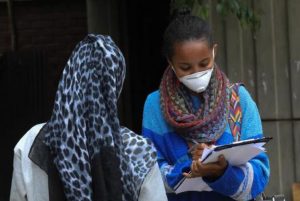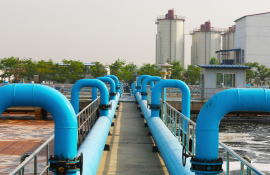Securing Sanitation: The Compelling Case to Address the Crisis
Sanitation and the means to practice hygienic behaviors yield direct benefits in terms of health, education and economic productivity. Lack of access to this most basic of needs is an assault against human dignity. This report lays out the economic case for investing in sanitation: 1.47 billion people (20% of the world's population) stand to benefit if the target is met and the economic benefits could be as high as USD 65 billion annually.
In 2002 the World Summit on Sustainable Development in Johannesburg recognised the central role played by sanitation when it adopted a target to halve, by 2015, the percentage of people without access to basic sanitation. Sanitation and the means to practice hygienic behaviours yield direct benefits in terms of health, education and economic productivity. Lack of access to this most basic of needs is an assault against human dignity. This report, the synthesis of two previously released papers, lays out the economic case for investing in sanitation: 1.47 billion people (20% of the world’s population) stand to benefit if the target is met and the economic benefits could be as high as USD 65 billion annually. The greatest proportion of these benefits will accrue in the poorest regions of the world, particularly in Sub-Saharan Africa, but the benefit cost ratio is consistently high across all regions.The report goes on to explore ways and means to accelerate progress. Using a historic analysis of the public health movement in Europe in the late 19th century, it argues that institutions need to be reshaped to address the urgent need to increase access to basic services. An increased focus on the household and emphasis on creating and responding to demand for appropriate services are needed along with better and more efficient investments in public elements of sanitation, including sanitation in schools and health centres.
The report, commissioned by the Government of Norway, was prepared by the Stockholm International Water Institute (SIWI) with input from the World Health Organization and the Norwegian Agency for Development Cooperation.
Lesson learned
The impact of a coordinated campaign of awareness raising has already been felt with sanitation being added to the MDGs in Johannesburg, owing to the Water Supply and Sanitation Collaborative Council whose advocacy campaign: “Water, Sanitation and Hygiene for All (WASH)” has had impact at international level. This Raising the Political Profile of Sanitation and Hygiene has been achieved largely because the Water Supply and Sanitation Collaborative Council, formed as it is from a coalition of many key sector players, has been able to coordinate and use all their efforts to speak to a few selected simple messages which have all served to reinforce each other. The campaign has also highlighted the importance of information – and there are still many key information gaps which could usefully be filled to help analyse the most appropriate ways to increase access to sanitation.
At national level too, there is a need for coherence of action, and information. More efforts are needed to establish what is really happening in sanitation – a number of useful tools can be used to enable policy makers and professionals to start a dialogue with communities and households about how to better address their needs. Simply studying what people are doing, and exploring how they have changed their hygiene habits over time can open the way to such a debate.
Finally of course, the lesson of the WASH campaign can be replicated at local level – if more people can be drawn into the process of promoting sanitation, both the strength and the coherence of the message will grow until it is undeniable. This is a process which requires support and may take time. As we saw at the beginning, sanitation has many facets and difficult decisions may need to be taken about how to best deploy public funds over time to achieve the overall objective. Such decisions can best be made in the context of open and fair discussions with all sector actors, based on a good understanding of what is currently happening, and by involving households and communities in an evaluation of their own needs.




